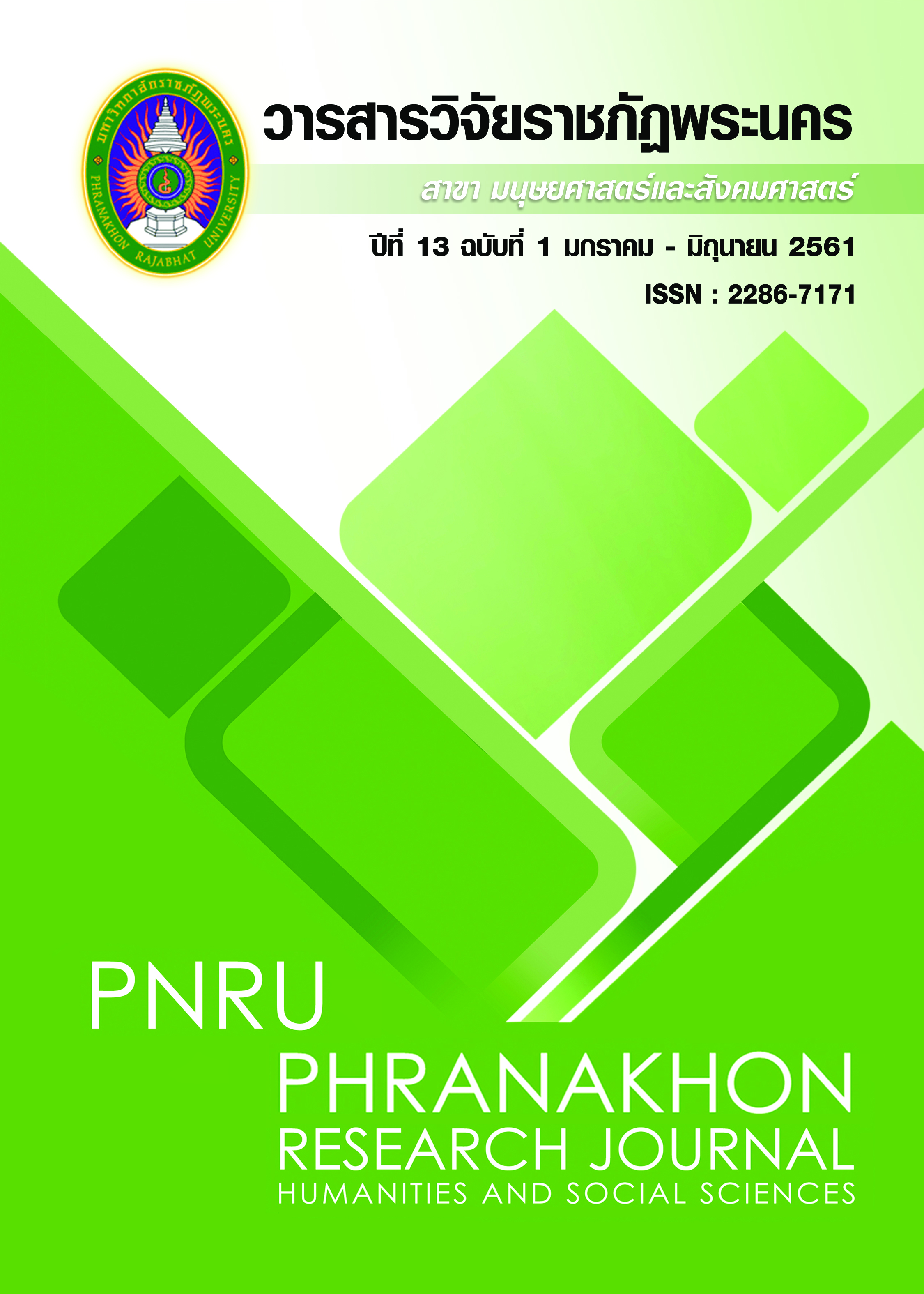DEVELOPMENT OF ENGLISH TRAINING COURSE FOR ONE TAMBON (VILLAGE) ONE PRODUCT (OTOP) ENTREPRENEURS
Main Article Content
Abstract
The purposes of this research were 1) to develop an English training course for
entrepreneurs of One Tambon One Product (OTOP) in Phranakhon Sri Ayutthaya Province
2) to compare the English ability of OTOP entrepreneurs, and 3) to examine the satisfaction of the OTOP entrepreneurs toward the training course. There were four steps in the process of curriculum development; step one Investigate English used and training needs of OTOP entrepreneurs, step 2 Curriculum design, step 3 Curriculum Implementation, and step 4 Curriculum Evaluation. The samples were 20 OTOP entrepreneurs voluntary and willing to participate in the research project with the qualification of senior high school or equivalences. They were selected through the simple sampling technique and were randomly assign as the experimental group. Research instruments included questionnaires that ask OTOP entrepreneurs about the needs
of English using, An English course for OTOP entrepreneurs, pre-test and post-test and
4) satisfaction survey form to find out the attitude of OTOP entrepreneurs toward the English training course. The statistics used for data analysis were percentage, mean, standard deviation, and t-test (One Sample Group). Results revealed that: 1. An English training course for OTOP entrepreneurs were established with the following elements for the training course: training schedule that covers a period of 2 days, role playing activity was applied in the training activities, and the content can be divided into 3 main parts.
Part 1 English in daily life situations includes listening and speaking, greetings, formal and
informal daily conversation, focusing on the language that is likely to be used in talking with customers in real situations. Part 2 English for explaining and giving information about the products in order to state the figure/price includes learning about vocabulary, structure of sentences, and conversation to communicate about products, features of products, raw materials, usage, and price. Part 3 Examples of English conversations for the trainees to study as models and practice by themselves so that they are able to use English more effectively. Also, there were further elements of an English course included 1) Rational, 2) the Purposes of the Training, 3) the Structure of the Training Course, 4) Activities on the Training Course 5) Training Materials and 6) Measurement and evaluation. All elements were considered consistent. 2. The comparison of English abilities of OTOP entrepreneurs, it was found that the average scores in listening and speaking before and after the training are different at statistical significance of 0.5. The scores after the training were higher than that before the training. 3. The OTOP entrepreneurs’ satisfaction survey results, the attitude of toward the English training course can be classified into different aspects: 1) Content is the aspect that received very high satisfaction from the trainees, 2) Instructor is the aspect that receive very high satisfaction from the trainees, 3) teaching method is the aspect that receive very high satisfaction from the trainees, and 4) evaluation is the aspect that receive very high satisfaction from the trainees as well.
Article Details
Each publish articles were copyright by Phranakorn Rajabhat University
Any contents which appeared in each articles in the journal were authors personal opinion. It did not relate to Phranakorn Rajabhat University and other instructors in the university. Each authors would take responsibility on their articles. If there are any mistake, the authors will take responsibility themselves
References
Johns, A. M. and T. Dudley-Evans. (2000). Developments in English for specific purposes: A multi-disciplinary approach. Cambridge: Cambridge University Press.
Hutchison, T. and A. Waters. (1996). English for specific purposes: A learning-centered approach. Cambridge: Cambridge University Press.
Strevens, P. (1988). ESP after twenty years: a re-appraisal. Singapore: SEAMEO Regional Language Center.
Robinson, P. (1991). ESP Today: A Practitioner’s Guide. London: Prentice Hall International.
Mackay,R. and A. Mountford. (1978). English for Specific Purposes. London: Longman.


